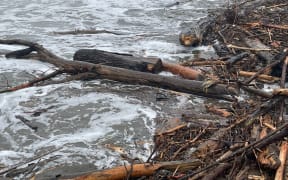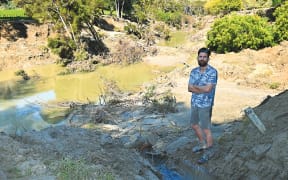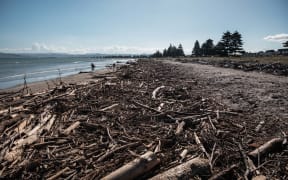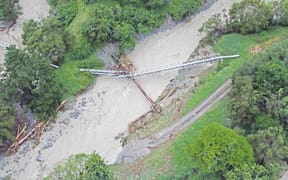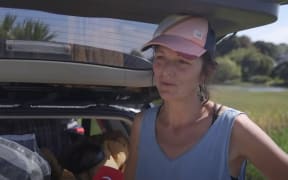
Gisborne's main water pipe has been significantly damaged during Cyclone Gabrielle, forcing the city into a water crisis. Photo: Supplied via LDR
Slash and whole trees from Gisborne District Council's joint-venture forest appear to have played a significant role in damaging the city's main water supply during Cyclone Gabrielle.
On Friday, the council confirmed woody debris was "a critical factor" in cutting off supply to the Waingake pipeline - a network which runs through its 1100-hectare commercial pine forest.
But the organisation would not disclose how much of the damage was caused by forestry waste from its land until an investigation is undertaken, saying the main priority is reinstating water.
The pipeline is undergoing major repairs following the cyclone, with the council working alongside local engineers to restore a missing section and fix multiple breaks.
While that work is undertaken, the city remains in a water crisis with industry on pause and residents asked to significantly reduce consumption.

"A critical factor in the damage was the mobilisation of pine, both whole trees on steep slopes and harvest waste logs," council chief executive Nedine Thatcher Swann said on Friday.
Asked about potential issues created by the recent removal of pine trees at its Waingake plantation, Thatcher Swann said the trees were harvested in a joint venture with forestry company Juken New Zealand.
She did not address a question about mitigation of forestry slash at the site.
"An investigation into the mobilisation of wood following Cyclone Gabrielle is under way," she said.
"Thank goodness council started this project when it did to revert forestry pine to native trees. This whole project has been about securing this pipeline."
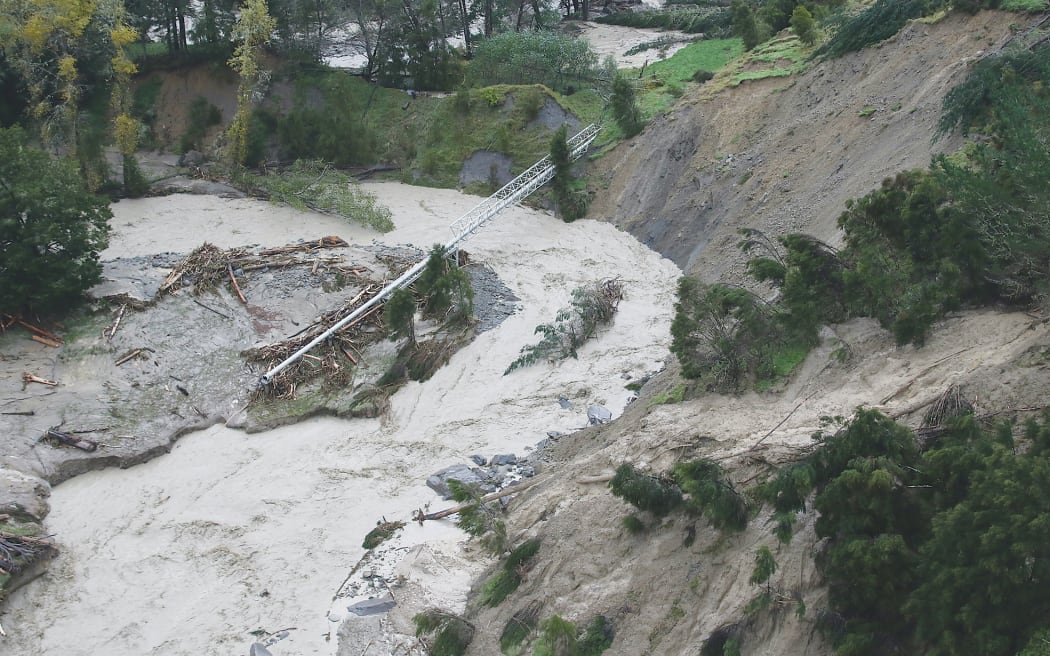
Urgent repair work is under way on the pipe that brings the city’s water supply from Waingake. Debris brought down in Cyclone Gabrielle can be seen under and around the pipe. Photo: Supplied via LDR / Murry Cave
The council purchased the land at Waingake in 1991 from Maraetaha Incorporated, establishing a plantation pine forest under a joint forestry agreement.
Staged harvesting of the plantation began in 2018 and is expected to be completed by 2027.
In its place, the council is transforming 1200 hectares back into native forest.
"This planting will deliver natural infrastructure to protect, filter and supply clean water to Tairāwhiti, helping to provide water security, resilience and adaptation to climate change for the region," the council's website said.
Juken New Zealand is the consent holder for the land, meaning it has forestry rights to plant, establish and harvest all trees and timber growing on the land.
Forestry slash mobilised by heavy rain events is creating major issues in the region.
On February 9, the council wrote to key ministers requesting support for an independent inquiry on land use and asked the government to invest in the regional leaders' call for funding a Just Transition programme to move Tai Rāwhiti to more sustainable economic, social, cultural and environmental outcomes.
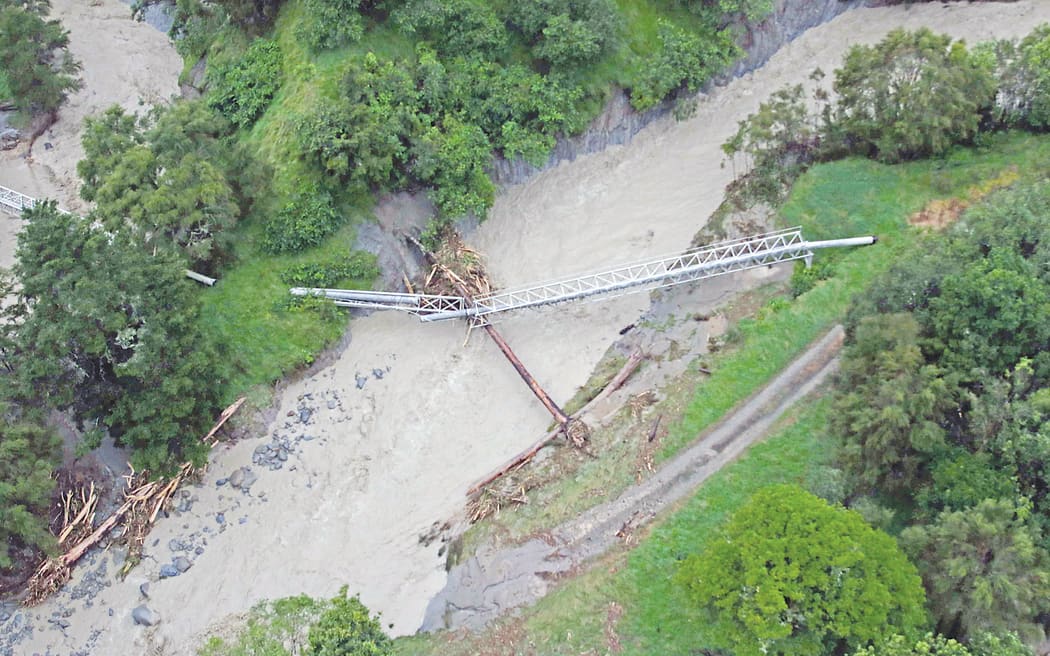
A birdseye view of damage to the city's water pipe from the Waingake Water Treatment Plant to Gisborne city, taken directly after the cyclone hit the region. Photo: Supplied via LDR / Murry Cave
An assessment of woody debris done by a council scientist in the period between Cyclone Hale and Cyclone Gabrielle found high levels of pine were present in the waste.
At Tolaga Bay, woody debris was about 80 percent pine, while the debris at Waikanae Beach was 70 percent pine, Tikapa 51 percent, and Tokomaru Bay 50 percent.
The council said it was important to note figures related to assessments of woody debris on beaches and proportions of forestry slash were likely higher in areas upstream of beaches.
Initial inspections by the council in river banks at Hikuwai Bridge following Cyclone Gabrielle found woody debris appeared to be 100 percent pine.
Last Thursday, the government announced it would launch a ministerial inquiry into land use, forestry practices and the impacts of slash.
The inquiry is scheduled to take two months, and is tasked with investigating fallout from weather events and the impact of slash and sediment on communities, livestock, buildings, the environment and policy settings.
Local Democracy Reporting is Public Interest Journalism funded through NZ On Air
